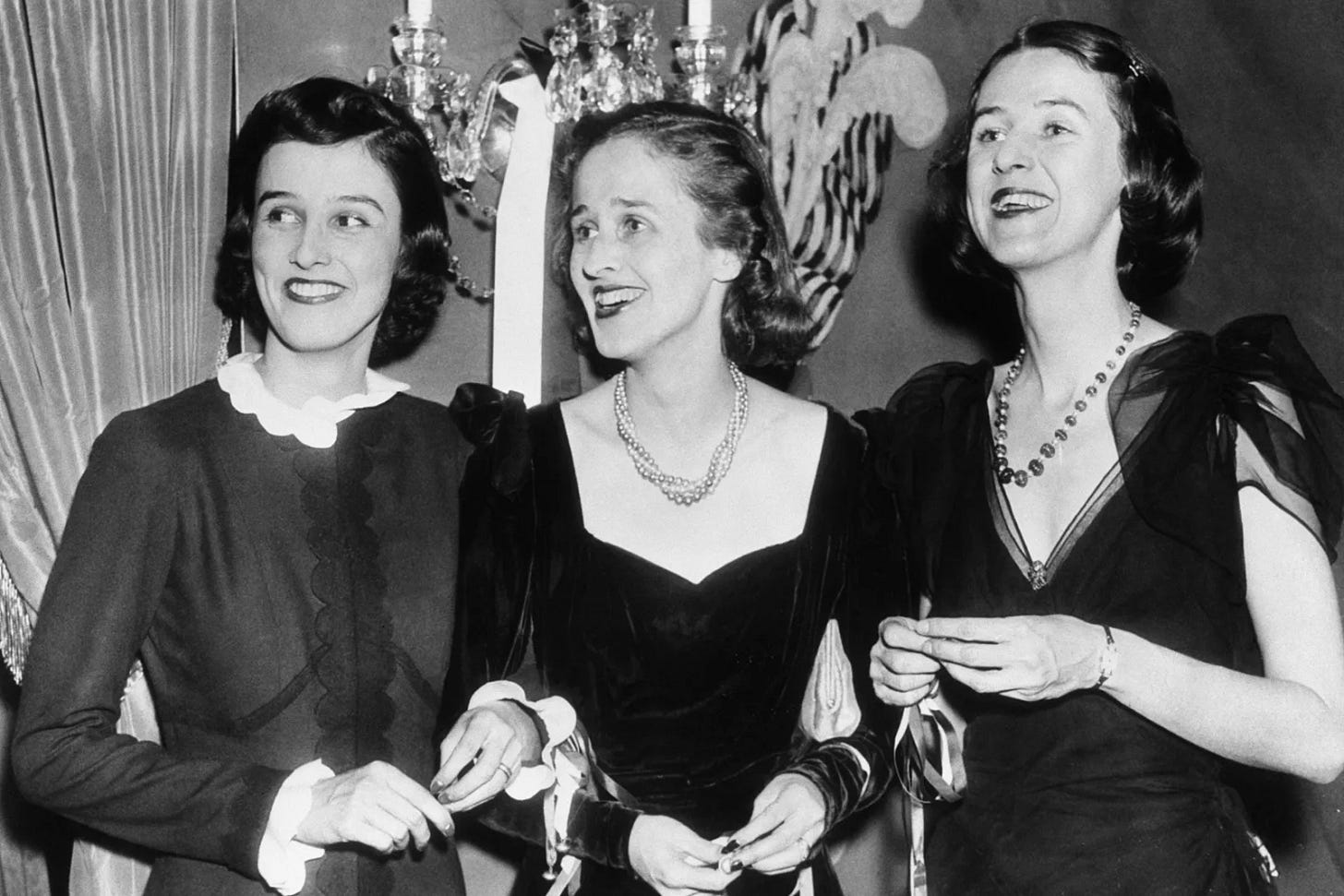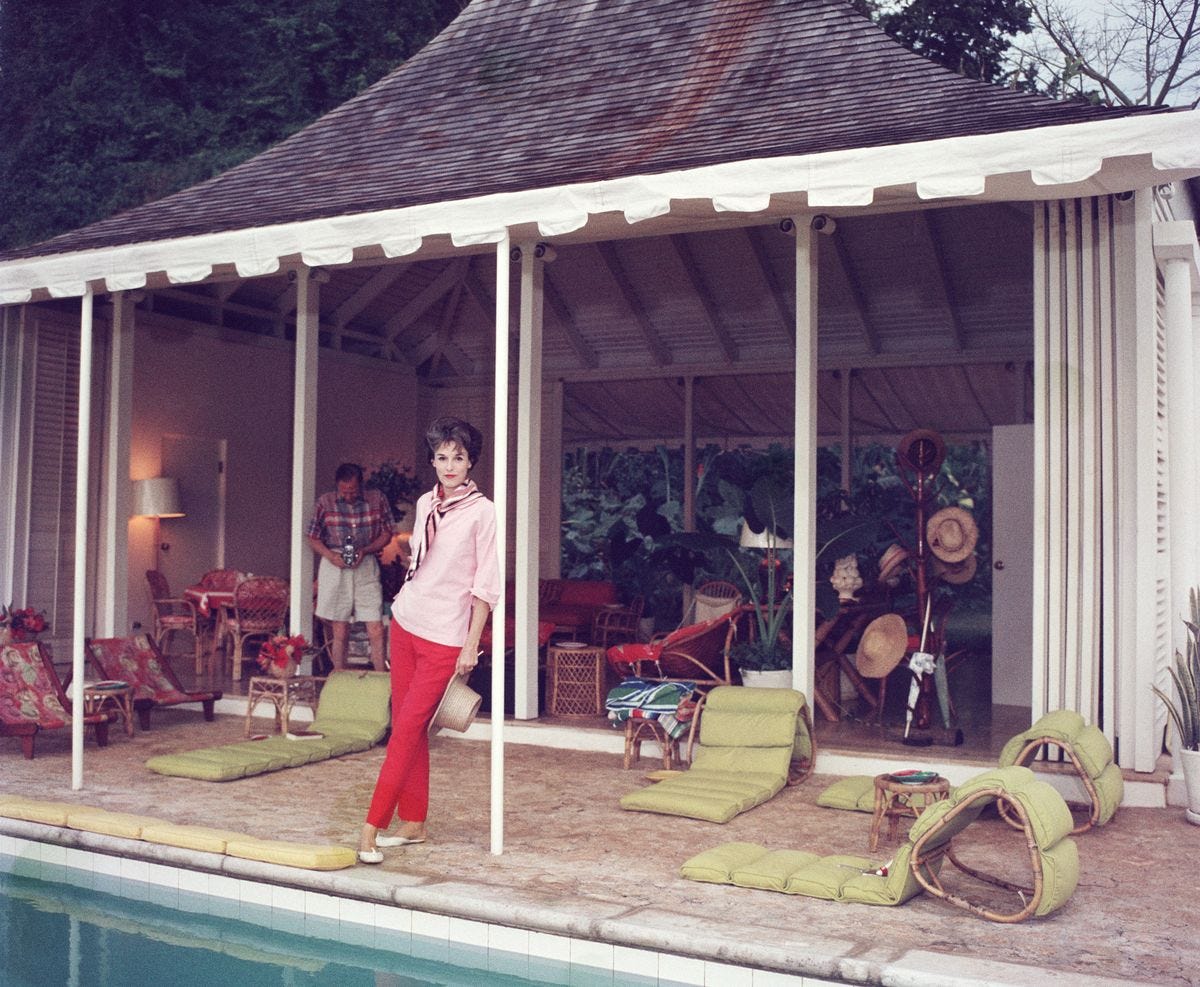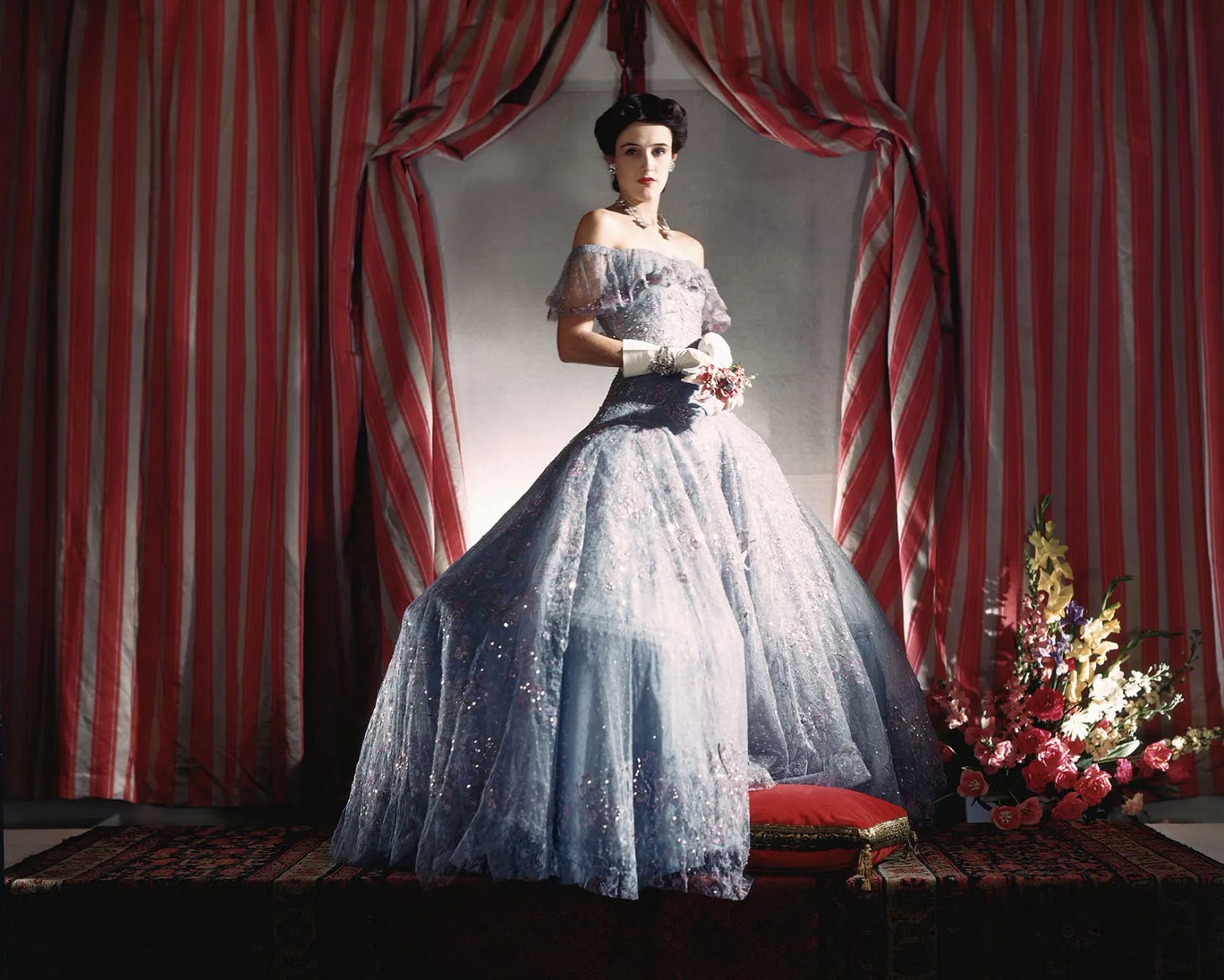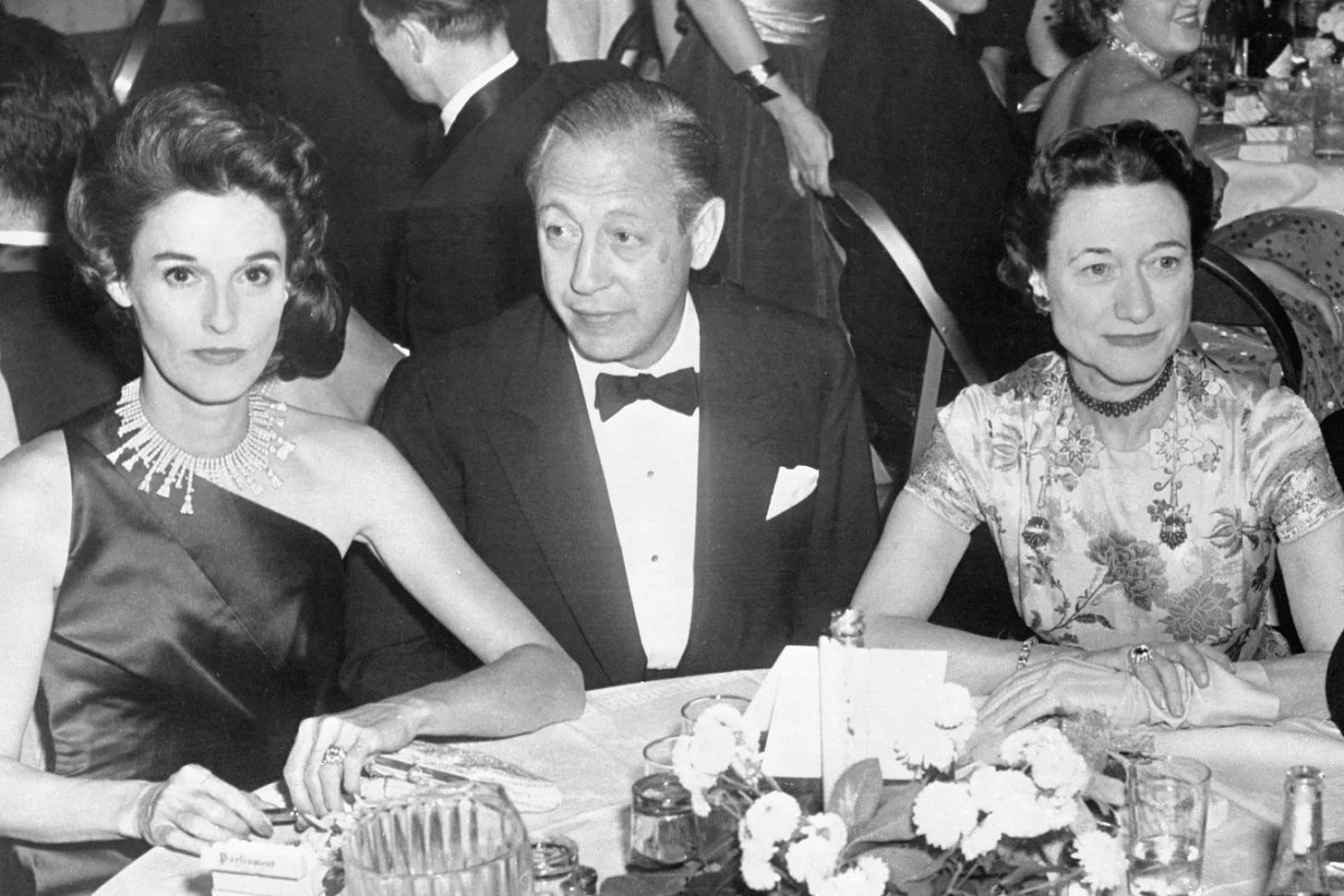Cultured Story #1: Who Was Babe Paley?
Truman Capote’s Favorite Swan "The Most flawless Woman Of The 20th Century"
‘Babe Paley had only one fault. She was perfect. Otherwise, she was perfect.’
—Truman Capote

Babe Paley remains a name that evokes the epitome of glamor and sophistication. Her aura of flawlessness in appearance, conduct, and charm has left an indelible mark on those who had the privilege of knowing her, as well as those who were touched by the radiance of her extraordinary life.
If you aren’t subscribed yet, hit the subscribe button below to receive the Cultured Stories every weekend, directly in your inbox:
Early Life
Barbara Cushing, was born on 5 July 1915 and hailed from the refined environs of Boston, Massachusetts. She was the daughter of the esteemed brain surgeon Harvey Cushing, who encompassed institutions like Yale, Harvard, and Johns Hopkins, and his wife, Katharine Stone. Babe's formative years were spent amidst the genteel charm of New England, primarily in Brookline, Massachusetts, alongside her two elder sisters, Mary and Betsy. The sisters, known collectively as ‘The Fabulous Cushing Sisters,’ went on to form illustrious unions with influential East Coast families, as seen in Mary's marriage to Vincent Astor and Betsy's union with James Roosevelt, son of Franklin D. Roosevelt.

Babe's introduction to society occurred in 1934 at a prestigious event in Boston, amidst scions of the Roosevelt dynasty and other polished scions of notable lineages. By 1938, she had transitioned to New York City, assuming the role of a fashion editor at Vogue magazine. Her presence instantly captivated New York's social milieu. Possessing an impeccable wit and an exquisite sense of style, she personified glamor in a manner that defied convention. Her discerning eye for the avant-garde, the captivating, and the elaborate positioned her as a trendsetter. In 1941, Time magazine bestowed upon her the distinction of being the world’s second best-dressed woman, second only to Wallis Simpson, the infamous consort of the abdicated Edward VIII.
First Marriage
In 1940, Babe entered into matrimony with Stanley Grafton Mortimer Jr., a distinguished Harvard alumnus who seamlessly transitioned into the realm of advertising. Possessing the classic attributes of an East Coast elite, Mortimer, son of a stockbroker and an accomplished amateur tennis champion, navigated the burgeoning consumerist milieu of 1940s New York. An ardent sportsman, he was an avid tennis player, golfer, and esteemed member of the jockey club.
The union bore fruit in the form of two children, Stanley Grafton Mortimer and Amanda Jay Mortimer, both of whom forged their own paths within New York's spheres of commerce and old-moneyed elite. Following their divorce in 1946, Babe embarked on a subsequent marriage to William S. Paley, a union that endured for the remainder of her life.
Babe Becomes A Paley
Upon her marriage to Paley, Babe relinquished her role at Vogue, assuming the mantle of a full-time socialite and a figure whose influence transcends the contemporary understanding of the term. William S. Paley, a luminary in his own right, hailed from Ukrainian Jewish immigrants and emerged as a pivotal figure in the broadcasting domain, contributing significantly to the shaping of modern media. As the chief executive of CBS, he propelled the modest radio network into a towering citadel of modern media, demonstrating an intuitive grasp of broadcasting's potential.
Throughout their matrimonial journey, Babe and William established their residence at the St. Regis, an opulent Beaux-Arts edifice soaring 18 stories high at the prestigious corner of Fifth Avenue, developed by none other than John Jacob Astor IV. (Watch the video touring Babe Paley’s New York City Apartments) This luxurious hotel, adorned with limestone on the exterior and adorned with marble and bronze within, served as the elegant backdrop for the Paleys' abode. The interior of their apartment, a creation of the renowned Billy Baldwin, served as their sanctuary during the weekdays, offering a haven within the bustling city. Come the weekends, the Paleys would retire to Kiluna Farm, their idyllic country retreat nestled on 32 hectares in Manhasset, Long Island, a pastoral oasis far removed from the urban clamor.

Social Standing
Within the confines of New York City, the Paley family cultivated a vibrant circle of captivating and erudite companions. Babe often found herself engaged in lively conversations outside a café with the likes of Truman Capote, the ambitious author whom she later distanced herself from. The rift emerged following the publication of compromising revelations about her in his tell-all, Answered Prayers, which serves as the basis for the forthcoming series Feud: Capote vs. The Swans, directed by Gus Van Sant. Another esteemed confidante was socialite Slim Keith, a member of the swans whose lives were intricately woven into Capote's literary tapestry. Weekends and summers at Kiluna saw luminaries such as Grace Kelly, Lucille Ball, and David O. Selznick gracing the family's terraces, adding to the allure of their esteemed gatherings.
Regrettably, their relentless social life was marred by the anti-Semitic tenor of the era, with Babe facing stigmatization for her union with a Jewish man. The Paleys encountered exclusion from various New York establishments owing to their Jewish heritage. Reportedly, this mistreatment was one of the rare occurrences that ruffled Babe's otherwise impeccable demeanor.
Despite the outward appearance of opulence and extravagance, the Paley family's domestic life was far from idyllic. Babe bore two children with William Paley, William Jr. and Kate Paley, yet her husband's notoriety as a philanderer resulted in prolonged absences and left her isolated. Despite her dedication to her children, her own addiction to the social scene and the pressure to maintain her renowned beauty and grace strained her relationship with them. However, her social status continued to ascend, with her inclusion on the best-dressed list on fourteen occasions following 1941, culminating in her induction into the Fashion Hall of Fame in 1958.
Insider Account of Babe
In Town and Country Carol Prisant gives an extraordinary account of au pairing for the Paleys in 1957. She writes of Babe, ‘In retrospect, I think she was a pure construct of beauty and what was once called breeding’. In Prisant's hindsight, Babe is seen with the utmost transparency, only to reveal another truth made of nothingness – that Babe was an artefact, the ultimate construction of a culture obsessed with special attributes, cultivated in special ways. Grace. Beauty. Pedigree. Babe was real and unreal; a person, and yet also a rendering.
Keep reading with a 7-day free trial
Subscribe to Cultured Elegance to keep reading this post and get 7 days of free access to the full post archives.










